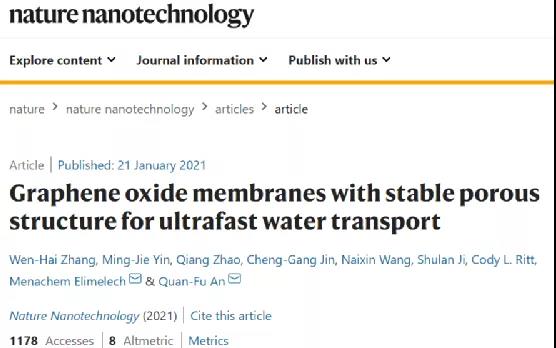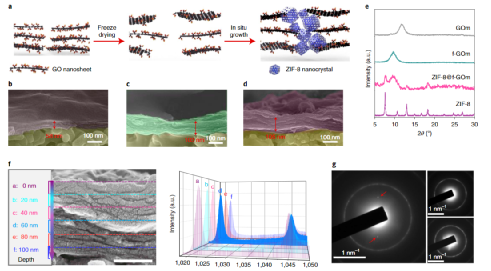Safety Fu and others from Beijing University of Technology published the latest results in Nature Nanotechnology!
QQ Academic Group: 1092348845
Detailed

Author: Wen-Hai Zhang Corresponding author: Anquan Fu, Menachem Elimelech communications: Beijing University of Technology, Yale University
The high stability and ultra-high permeability of carbon nanomaterials have caused great interest in the application of nanofiltration membranes. However, the microstructure of the graphene oxide film is unstable, and this instability will cause it to fail under cross-flow and hydraulic pressure conditions and have a limited service life.In view of this, Professor Safety Fu of Beijing University of Technology and Menachem Elimelech of Yale University in the United States designed a layered GO/ZIF-8 composite nanofiltration membrane with high stability and super permeability.
A highly stable and ultra-permeable composite nanofiltration membrane is proposed. The composite nanofiltration membrane is composed of organic metal framework (ZIF-8) nanocrystals and graphene oxide film (ZIF-8@f-GOm). The sample uses ice template, and then grows ZIF-8 crystals in situ on the edge of the nanosheet to prepare a nanofiltration membrane.

Figure 1. Preparation and characterization of ZIF-8@f-GOm.
The ZIF-8 nanocrystals grown in microporous defects have a dual effect: it improves the stability of the framework and achieves selective water-solute separation. In addition, ZIF-8 nanocrystals act as a mechanical support, preventing the compression of micropores, and realizing that the nanofiltration membrane structure maintains good stability during long-term work.

Figure 2. The pore structure of graphene oxide base film and the elucidation of the growth mechanism of ZIF-8.
The selective growth of ZIF-8 in the microporous defects expands the interlayer spacing, and at the same time gives the layered frame the mechanical integrity, thereby producing a stable microstructure that can maintain 60 l m-2h- within 180 h- Water permeability of 1 bar-1 (30 times higher than GOm). In addition, alleviating microporous defects through ZIF-8 growth can increase the selective penetration of methyl blue molecules by six times.

Figure 3. Nanofiltration performance of graphene oxide based membranes.
References Zhang, WH., Yin, MJ., Zhao, Q. et al. Graphene oxide membranes with stable porous structure for ultrafast water transport. Nat. Nanotechnol. (2021). DOI: 10.1038/s41565-020-00833-9https ://doi.org/10.1038/s41565-020-00833-9
- Previous: 4D bioprinting based o
- Next: A Rising 2D Star: Nove


 Academic Frontier
Academic Frontier
